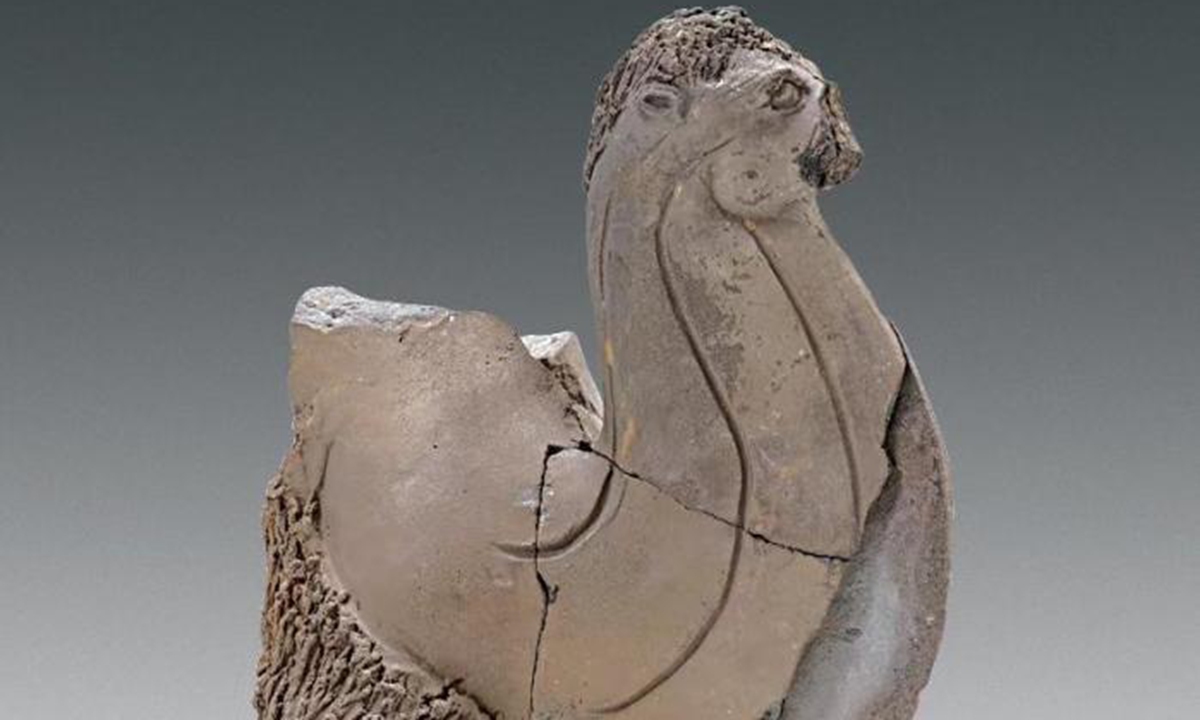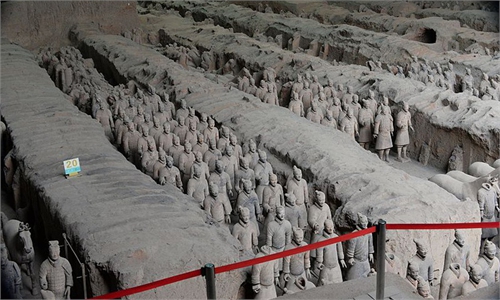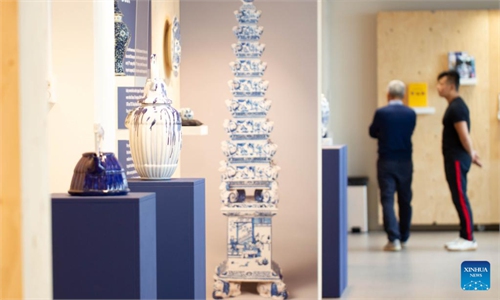ARTS / ART
Over 300 pottery pieces found in Northern Wei high official's tomb in Shanxi

Photo: China News Service
A tomb belonging to a Northern Wei Dynasty (386-534) official was recently discovered in North China's Shanxi Province.The tomb was unearthed from the province's Yuncheng city after local villagers spotted an area of soil collapse in a farm. According to an epitaph in the tomb, the owner was Xue Huaiji, a cishi, or regional inspector.
Over 300 relics, mainly pottery artifacts like figurines and animal-shaped wares and bronze wares, have been discovered in the tomb.
Song Chunxia, an archaeologist in Shanghai, told the Global Times that these relics show the "noble" character of the tomb owner.
"The pottery figurine is also the artistic representative of the Northern Wei Dynasty too. They reflect the cultural tastes and traditions of ancient people even though pottery figurines were mostly used as burial objects," Song noted.
The tomb is located in the village of Xisiya, which lies along the eastern banks of the Yellow River. This means it belonged to the "Ancient East River" district in the ancient times.
The tomb is so far "one of the largest Northern Wei tombs with the highest-ranking and richest burial objects that have ever been found in the district," said Ma Sheng, the lead archaeologist on the project.
Along with prolific pottery figurines, a fragment of Xue Huaiji's epitaph engraved on a piece of stone was also discovered.
With a total of 662 characters in length, the epitaph documents that Xue died at the age of 53, two years after the official returned to his hometown.
The ancient official and his wife were both entombed in the stone coffin. The stone coffin was equipped with both head and foot covers and two facades decorated with mythical creatures and gods.
"The unearthed epitaph and engravings on the stone coffin provide valuable material for the study of ancient art history," Ma noted.


